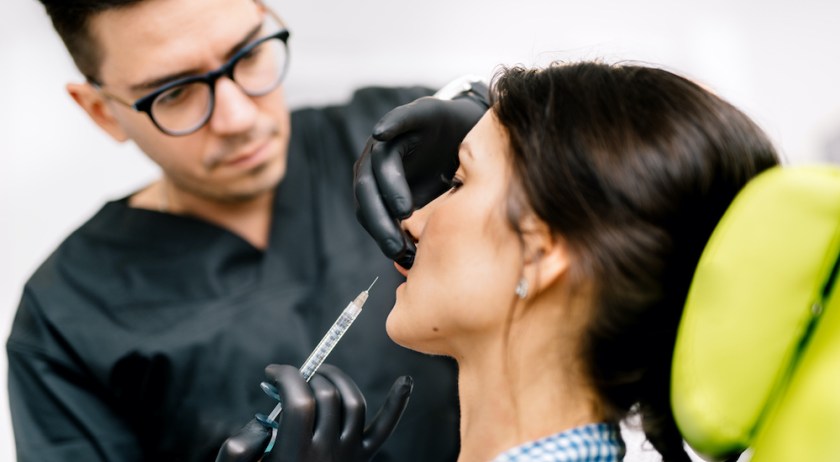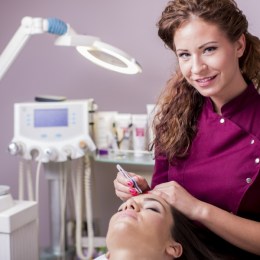Dr Jake Sloane runs us through the sterility and cleanliness measures he urges every injector to take to ensure patient and practitioner safety – especially during the busy Christmas period:
Since some of the lockdowns around the world ended, the demand from patients for cosmetic treatments has been truly unprecedented. In a speciality where aseptic technique has always been vitally important, cleanliness and patient safety have become particularly hot topics post-COVID.
With my background in surgery, I’ve always tried to approach injectables with a systematic method, looking for ways to improve my efficiency and technique. It’s my belief that meticulous planning and attention to detail distinguishes the elite injectors from the rest. By thinking ahead, our injecting strategies become clearer and the results and outcomes that we deliver for our patients will always improve.
Here are some of my top tips to help keep your technique on point and your patients safer:
- Explicitly write your treatment plan down during your consultation. Most injectors in Australia work alone, so calculating everything that you’ll need before you lay hands on your patient will help you mentally plan ahead.
- Consider opening two dressing packs for procedures. One for ‘dirty’ items and one for ‘clean’ items such as your cannulas. Mixing these risks contamination and inadvertent infections.
- Don’t ever lay an exposed cannula or needle on a dressing pack, keep them safely covered in their protective sheaths for sterility and only remove these when you need the item.
- Keep the bin nearby with the cover off so you can easily dispose of gauze and non- sharp items with a no touch technique.
- Did you know that your filler syringe hub, the plunger and the inside of the filler syringe packaging are not sterile. During the manufacturing process, only the inside of the syringe and the filler gel itself is sterilised. So as soon as you pick up your fillers, consider your gloves contaminated.
- Draw up your anti-wrinkle syringes, choose your fillers and lay them out with the appropriate (but sheathed) needles and cannulas in a systemic order that makes sense to you before you start injecting.
- Open up your alcohol wipes, gauze, decant your chlorhexidine or other cleansers before you start injecting
so that you don’t ever re-touch your cupboards, drawers or doors with gloved hands. This is a very common mistake and risks cross contamination of patients. - Once you’ve used an item such as a gauze, either put it straight into the bin or onto the separate dirty field that you opened at the start. Always put needles straight into the sharps bin, but if you do need to use it again, use the galley pot of the sterile feed so that all of your sharps are in one safe place to help avoid needle stick injuries.
- ‘Dilution is the solution of pollution’ – an old surgical saying but it holds just as true for injectables! Clean, clean and then clean the skin again. Patients typically wear makeup, sun screen, serums and tinted creams. They are high risk for infections or delayed onset nodules, so educate them to come with a clean face to save you both time but also potential complications. Adding this information to your pre- treatment emails, SMS reminder messages, etc helps reinforce to your patients why having clean skin is so important.
- Continue to clean the face as you go and re-clean every single injection site again. Don’t ever inject if you’ve touched the skin with a gloved finger to palpate a landmark. Just re-clean it with an alcohol wipe and let it dry before you inject. Alcohol only works properly as a steriliser if the skin fully dries. (The same goes for using alcohol gel on our hands, rub the hands together and let it dry fully).
- Remember, your gloves should be considered dirty, even if you have donned sterile gloves! Think of this example – when you’re served food in a café by someone wearing gloves, they’ll also be touching their environment, handling money, touching their face and everything else around them! It’s the same principle in our injecting rooms and gloves are usually inappropriately used as a false safety blanket. We’ll touch our trolleys, our patients’ faces, hair or clothing, our filler syringes etc. Cleaning the skin and not touching it again is the only way of guaranteeing sterility.
This is by no means a complete list of sterilty measures, but if we think about what we are offering our patients and aim to elevate our standards, we’ll encounter less complications.
DID YOU KNOW
There are 5 ways you can catch up with SPA+CLINIC?
- Our quarterly print magazine, delivered to your door. Subscribe here.
- Our website, which is updated daily with its own completely unique content and breaking news.
- Our weekly newsletter – free to your inbox! Subscribe here.
- Our digital magazine – click here to view previous issues.
- Our social media – see daily updates on our Instagram, Facebook & Linkedin





